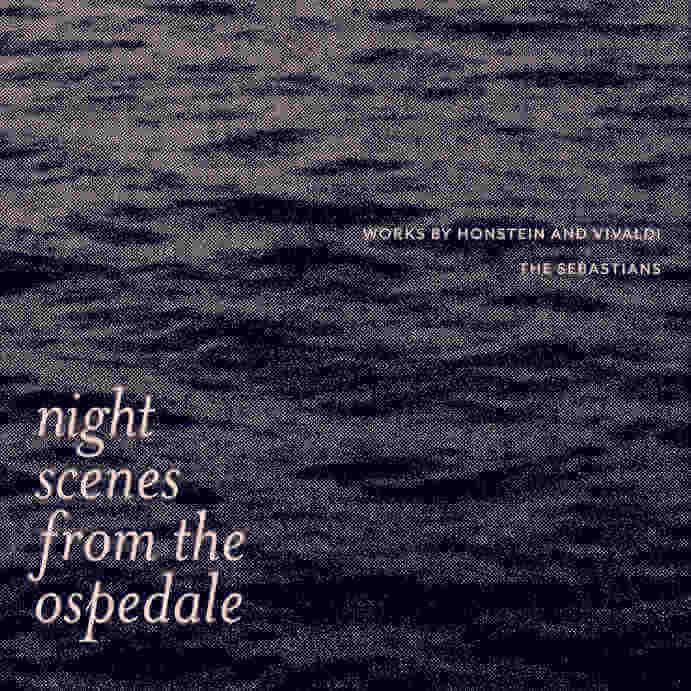Night Scenes from the Ospedale (2015)
Credits
released January 13, 2015
Cat#: CD138
Label: Soundspells Productions
Performers
Daniel S. Lee, violin
Nicholas DiEugenio, violin
Beth Wenstrom, violin
Katie Hyun, violin
Dongmyung Ahn, viola
Jessica Troy, viola
Ezra Seltzer, cello
Wen Yang, bass
Daniel Swenberg, theorbo
Jeffrey Grossman, harpsichord
Though The Sebastians might at first blush sound like the name of a ‘60s folk outfit, it's anything but. Instead, the group is a ten-member ensemble that specializes in music of the baroque and classical eras, something gloriously upheld by the stellar renderings of four concerti by Antonio Vivaldi (1678–1741) on its debut album Night Scenes from the Ospedale. What makes this an especially fascinating recording, however, isn't so much the group's exuberant performances but the striking contrast between Vivaldi's L'Estro Armonico (Amsterdam, 1711) and the five 2011 settings composed by Robert Honstein (b. 1980). The latter, who's a co-producer of Fast Forward Austin, an annual, Texas-based marathon concert of new music, and a founding member of the NY-based composer collective Sleeping Giant, isn't new to these pages, incidentally, as his New Focus Recordings collection, RE:you, was reviewed by textura upon its late-2014 release.
A bit of background is needed to clarify the thematic connection between the composers' works, and Honstein's liner notes prove helpful in that regard: “For nearly forty years Antonio Vivaldi worked at the Ospedale della Pietà directing music services, performing, composing, and overseeing the musical education of orphan girls.” Captivated by the idea of young women performing music in a small Venetian church under Vivaldi's instruction, Honstein tried to imagine what the world, sound and otherwise, would have been like for these pupils. He eventually determined that the music he would compose for the project would need to be diametrically different in character and style from Vivaldi's vivacious material and so, with that as a guiding principle, decided to fashion night-time music—“a kind of music barely heard, melting into the stillness of empty rooms and dimly lit hallways”—as a way of differentiating it from the daytime music of his forebear.
With four violins, two violas, cello, bass, harpsichord, and theorbo (a plucked, lute-like string instrument) at their disposal, The Sebastians execute the earlier material with enthusiasm and precision, regardless of whether it's a high-energy “Allegro” or melancholy “Largo.” Each of the Vivaldi works, by the way, adheres to a three-part structure that sees a slow movement framed by two high-spirited ones. The composer also shows himself to be a model of concision, considering that none of the twelve movements presented pushes into the four-minute mark.
Honstein's five scenes, by comparison, guide the listener on a creeping tour through the Venetian building to witness musical playing augmented by creaking floors, ambient reverberations, whispering voices, and the like, and while The Sebastians might have made a name for itself as a group of baroque specialists, the ensemble brings these remarkable pieces to life just as vividly. And while hearing the group effect a seamless transition from a Honstein soundscape to an uptempo Vivaldi movement is satisfying indeed, it's the dramatic juxtaposition between Vivaldi's pieces and Honstein's soundscapes that is the project's primary drawing-card. As different as the two sets of music are, they're nevertheless conjoined in a unique way on thematic grounds.
PRESS
“Just a great piece of music; I love the way tension is slowly increased throughout each interlude, guiding the ear to always expect ever-higher sounds and some new string effect.”
- Maggie Molloy, Second Inversion
